Text
How to Choose the Right Sharpening Stone for Your Knives
Choosing the right sharpening stone for your knives depends on several factors, including the type of knives you have, your sharpening skills, and your preferences. Here are some tips to help you select the appropriate sharpening stone:
Know Your Knife Steel: Different types of knife steel have varying hardness levels, which can influence the type of sharpening stone needed. High-carbon steel and harder stainless steel knives typically require finer grit stones, while softer steel knives may work well with coarser grit stones.
Consider Grit Size: Sharpening stones come in different grit sizes, which determine the aggressiveness of the sharpening process. Coarser grit stones (e.g., 200 to 600 grit) are suitable for repairing dull or damaged blades, while finer grit stones (e.g., 1000 to 8000 grit) are used for honing and polishing.
Assess Your Sharpening Skills: If you're new to sharpening knives or prefer a simpler sharpening process, you may opt for a combination stone that includes both coarse and fine grit sides. Combination stones offer versatility and convenience for beginners or casual users.
Understand Stone Materials: Sharpening stones are made from various materials, including natural stones (e.g., Arkansas stones) and synthetic stones (e.g., aluminum oxide, silicon carbide, diamond). Natural stones often provide a unique sharpening experience but can be more expensive and require more maintenance. Synthetic stones are more consistent and durable, making them suitable for regular use.
Choose Between Water Stones and Oil Stones: Synthetic sharpening stones are typically categorized as either water stones or oil stones based on the lubricant used during sharpening. Water stones require soaking in water before use and are preferred by many users for their fast cutting action and ease of use. Oil stones, on the other hand, are lubricated with oil and are known for their durability and longevity.
Consider Size and Thickness: Sharpening stones come in various sizes and thicknesses. Choose a stone size that accommodates the length of your knives, and consider the thickness for stability during sharpening. Thicker stones may offer better durability and stability but can be heavier and more expensive.
Evaluate Budget and Longevity: Sharpening stones vary in price based on their quality, material, and brand. Consider your budget and how frequently you'll be sharpening your knives when selecting a stone. Investing in a high-quality sharpening stone may be cost-effective in the long run, as it can last for years with proper care.
Read Reviews and Seek Recommendations: Before making a purchase, read reviews and seek recommendations from fellow knife enthusiasts or trusted sources. Online forums, knife communities, and professional chefs can offer valuable insights and recommendations based on their experiences.
By considering these factors and evaluating your specific needs and preferences, you can choose the right sharpening stone to keep your knives sharp and in optimal condition for years to come.
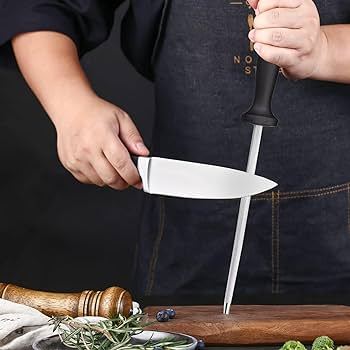
0 notes
Text
TPU Aprons: Combining Style and Functionality in the Kitchen
TPU (thermoplastic polyurethane) aprons offer a blend of style and functionality, making them an excellent choice for kitchen use. These aprons have gained popularity due to their versatile nature, providing both aesthetic appeal and practicality for chefs, home cooks, and culinary enthusiasts.
Here are some key points highlighting how TPU aprons combine style and functionality in the kitchen:
1. Durability and Resistance: TPU aprons are highly durable and resistant to abrasions, oil, grease, and chemicals commonly found in kitchen environments. This makes them long-lasting and easy to maintain, ensuring they retain their functionality and appearance over time.
2. Water Resistance: The water-resistant nature of TPU material makes these aprons ideal for use in kitchens where spills and splatters are common. The waterproof feature helps protect clothing underneath from getting wet or stained.
3. Comfort and Flexibility: TPU aprons often offer a balance between flexibility and sturdiness, providing chefs and cooks with ease of movement while working in the kitchen. The material is usually lightweight and flexible, ensuring comfort during extended cooking sessions.
4. Style and Design: TPU aprons come in various styles, colors, and designs, catering to different preferences and adding a touch of personal style to kitchen attire. Whether it's a classic solid color, a fun pattern, or a customized design, these aprons offer a range of choices to suit individual tastes.
5. Easy to Clean: Cleaning TPU aprons is usually hassle-free. They can be wiped clean with a damp cloth or washed using mild soap and water, making them a convenient choice for busy kitchens.
6. Eco-Friendly Options: Some TPU aprons are crafted from eco-friendly or recycled materials, appealing to individuals conscious of sustainability and environmental impact.
7. Multi-Purpose Use: Apart from kitchens, TPU aprons can be used in various settings like gardening, crafting, and other activities where protection from stains and spills is required.
8. Adjustable Fit: Many TPU aprons come with adjustable neck straps and waist ties, ensuring a comfortable and customizable fit for different body types.
In summary, TPU aprons provide a winning combination of style and functionality in the kitchen, offering durability, water resistance, comfort, and easy maintenance while allowing individuals to express their personal style preferences. These aprons are a practical and stylish addition to any culinary setting, catering to the needs of both professional chefs and home cooks alike.
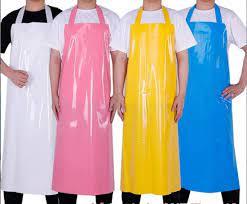
0 notes
Text
The Ultimate Guide to Choosing the Right Victorinox Knife for Your Kitchen
Choosing the right Victorinox knife for your kitchen can greatly enhance your culinary experience. Victorinox is a renowned Swiss knife manufacturer known for producing high-quality, durable, and versatile knives. To help you find the perfect Victorinox knife for your kitchen, here's the ultimate guide:
Understand Knife Types: Victorinox offers a wide range of kitchen knives, each designed for specific tasks. Familiarize yourself with the most common types:
Chef's Knife: Versatile for slicing, chopping, and dicing.
Paring Knife: Ideal for precision tasks like peeling and trimming.
Santoku Knife: A Japanese-style knife for slicing, dicing, and chopping.
Bread Knife: Serrated for effortless bread slicing.
Utility Knife: Mid-sized, all-purpose knife for various tasks.
Boning Knife: Designed for deboning meats and poultry.
Slicing Knife: Perfect for slicing cooked meats.
Carving Knife: Ideal for carving and slicing roasts.
Consider Your Cooking Style: Your cooking habits and the types of dishes you frequently prepare should guide your knife selection. If you primarily make sushi, a Santoku knife may be more appropriate. For general use, a Chef's knife is often recommended.
Knife Size: The size of your knife matters. For most home cooks, an 8-inch Chef's knife is versatile and suitable for various tasks. However, smaller knives like a 6-inch Chef's knife or 4-inch Paring knife might also be needed for specific tasks.
Handle Type: Victorinox offers knives with various handle materials, such as Fibrox and Rosewood. Choose a handle that feels comfortable and secure in your hand. Fibrox handles are generally preferred for their non-slip grip and durability.
Blade Material: Victorinox uses high-carbon stainless steel in their blades, which is known for sharpness, durability, and ease of maintenance. It's rust-resistant and holds its edge well.
Maintenance and Sharpening: Consider how easy it is to maintain and sharpen your chosen knife. Victorinox knives are relatively low-maintenance, but you should still invest in a good quality sharpening tool or honing rod.
Budget: Victorinox knives are known for their excellent value for money. They offer quality at a reasonable price point. Set a budget and choose a knife within that range.
Reviews and Recommendations: Read reviews from other users and seek recommendations from experienced chefs or culinary professionals. Their insights can help you make an informed decision.
Visit a Store: If possible, visit a kitchen store where you can hold and test the knives. This will help you determine how comfortable the knife feels in your hand.
Warranty and Customer Support: Check the manufacturer's warranty and the availability of customer support. Victorinox offers a lifetime warranty against defects.
Knife Sets: If you're starting your kitchen cutlery collection from scratch, consider buying a Victorinox knife set, which often includes a range of essential knives in one package.
Care and Safety: Learn how to care for your knife properly, including hand washing and proper storage. Always prioritize safety while handling sharp knives.
Once you've considered all these factors, you'll be well-equipped to choose the right Victorinox knife for your kitchen. Remember that a good knife can make a significant difference in your culinary experience, so invest in quality that suits your needs and preferences.

0 notes
Text

"Hand sawed" refers to a method of cutting or shaping wood or other materials using a hand saw. A hand saw is a manually operated cutting tool consisting of a blade with sharp teeth, and it is typically used in woodworking, carpentry, and various DIY projects.
0 notes
Text

Chain mesh gloves, also known as chainmail gloves or chain gloves, are a type of personal protective equipment (PPE) commonly used in various industries, including food processing, butchery, metalworking, and woodworking.
0 notes
Text
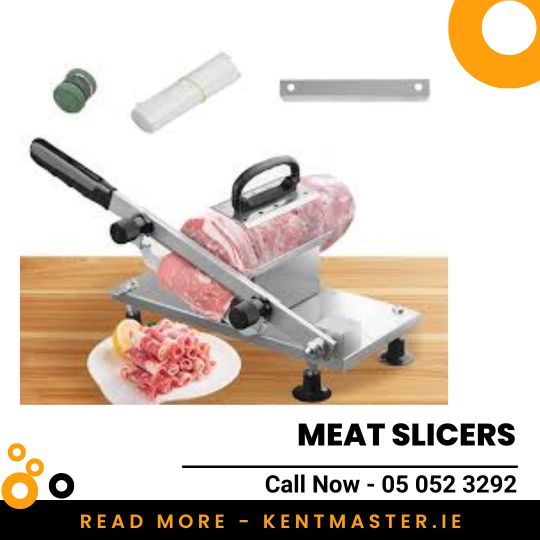
A meat slicer, also known as a deli slicer or slicer machine, is a kitchen appliance or commercial equipment designed to slice various types of meats, cheeses, and other foods with precision and consistency. It consists of a sharp rotating blade that slices through the food placed on a sliding carriage.
0 notes
Text
Hand Sawed
"Hand sawed" refers to the process of cutting or sawing material using a hand-operated saw instead of a power saw. Hand saws have been used for centuries to cut various materials such as wood, metal, plastic, and more.
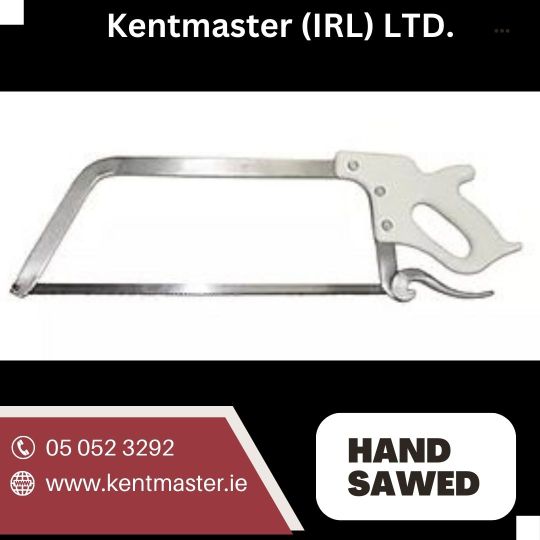
0 notes
Text
Buy Meat Cutting Knife Online
A meat knife, also known as a carving knife or slicer, is a type of kitchen knife designed for slicing cooked meats. It typically has a long, thin, and sharp blade, which allows for precise and smooth cuts through various types of meats, such as roasted turkey, ham, beef, or poultry. The blade's length helps to make clean, straight slices without tearing or shredding the meat.
Key features of a meat knife include:
Blade length: Ranging from 8 to 14 inches (20 to 36 cm) to accommodate different sizes of meats.
Thin and sharp blade: This ensures the knife can slice through meat with minimal effort and without crushing or tearing the fibers.
Pointed tip: Useful for making precise cuts and accessing hard-to-reach areas, such as joints or bones.
Flexible or semi-flexible blade: Some meat knives have a slight flex, allowing them to glide smoothly along the contours of the meat.
High-quality steel: A good meat knife is made of high-carbon stainless steel to maintain its sharpness and resist corrosion.
Comfortable handle: Since carving meat can be a task that requires some time, a comfortable and ergonomic handle helps reduce fatigue and ensures a secure grip.
It's essential to use a meat knife properly to avoid accidents or injuries. Always cut away from your body and keep the knife sharp for safe and effective slicing. When not in use, store the knife in a knife block or on a magnetic strip to protect the blade and prevent accidents when reaching for it. Regularly hone and sharpen the blade to maintain its cutting performance.

0 notes
Text
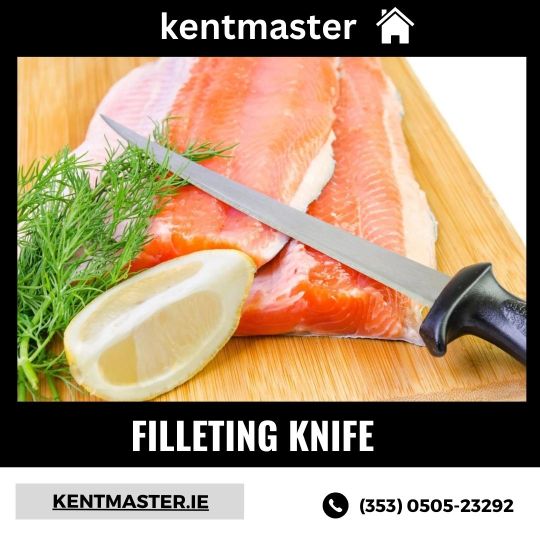
When choosing a filleting knife, it's important to consider the quality of the blade and its flexibility. High-quality filleting knives are usually made of stainless steel or high-carbon steel, as they offer good durability and corrosion resistance. The handle should be comfortable to hold and provide a secure grip, ensuring safety and control during use.
0 notes
Text

Chain mesh gloves, also known as chainmail gloves or butcher's gloves, are a type of protective handwear commonly used in butcheries and other industries where hand safety is crucial. These gloves are typically made of interlocking stainless steel rings, creating a flexible mesh that covers the entire hand and wrist.
0 notes
Text

A meat knife, also known as a butcher knife or cleaver, is a type of knife designed specifically for cutting, chopping, and slicing meat. It typically has a large, heavy blade with a broad spine and a sharp edge.
0 notes
Text
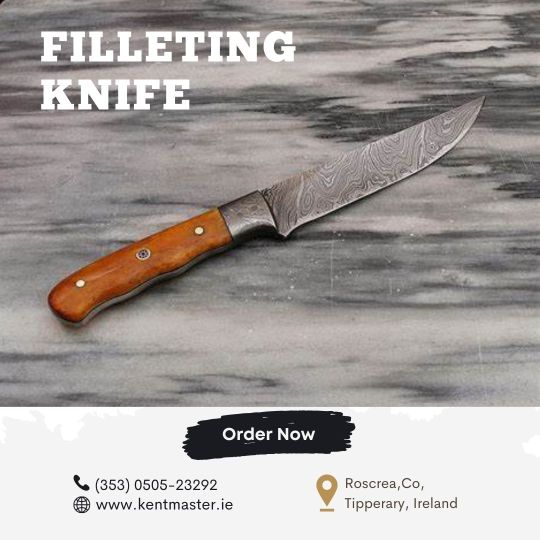
A filleting knife is a type of kitchen knife that is specifically designed for filleting fish. It typically features a thin, flexible blade that is tapered to a point, allowing for precise cuts and maximum control when removing the skin and bones from a fish fillet.
0 notes
Text
Bekina boots Online - Kentmaster
Bekina is a brand that produces rubber boots for various industries such as agriculture, fishing, construction, and food processing. They offer a range of boots with different features, one of which is cushioning.
Bekina cushioned boots are designed to provide extra comfort and support to the wearer, especially when they are standing or walking for extended periods. The cushioning material used in these boots can absorb shock and reduce foot fatigue, which can help improve overall comfort and productivity.
If you're considering Bekina cushioned boots, it's important to note that they come in different styles and materials, so it's essential to choose the one that best fits your needs. Some models are made with polyurethane (PU) or neoprene materials that provide excellent insulation and chemical resistance, while others are designed with safety features such as steel toe caps or slip-resistant soles.
Ultimately, Bekina cushioned boots can be an excellent choice for those looking for comfortable and durable work boots, especially if you work in industries that require extended periods of standing or walking.

0 notes
Text
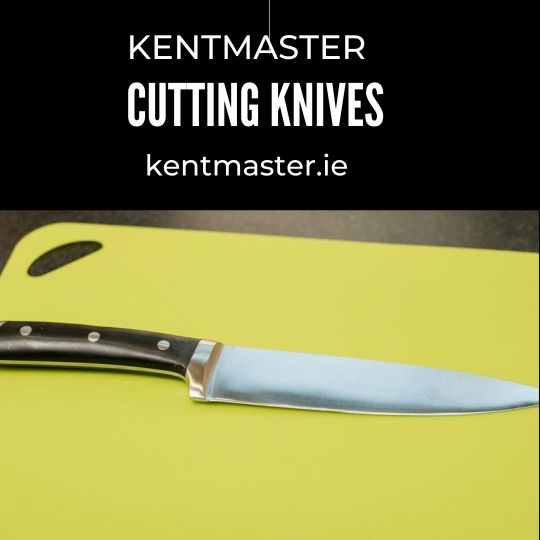
Cutting knives are sharp tools used for cutting various materials, such as food, paper, cardboard, fabric, and more. There are many different types of cutting knives, each with its own specific purpose and design.
0 notes
Text
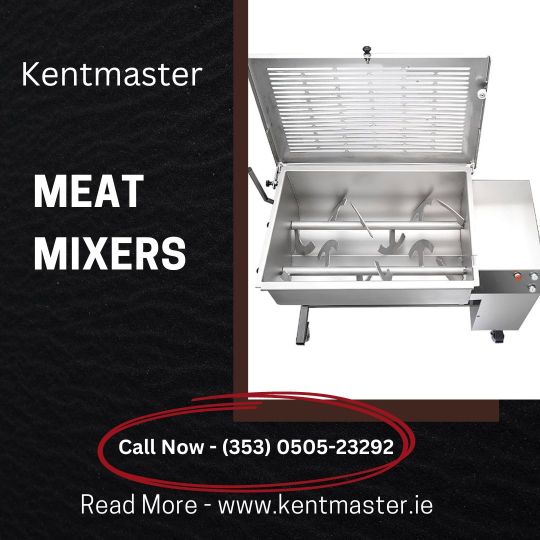
Meat mixers are kitchen appliances used to mix or blend meat and other ingredients together, typically for making sausages, meatballs, meatloaf, or other ground meat dishes. They are designed to make the mixing process more efficient and consistent than doing it by hand.
1 note
·
View note